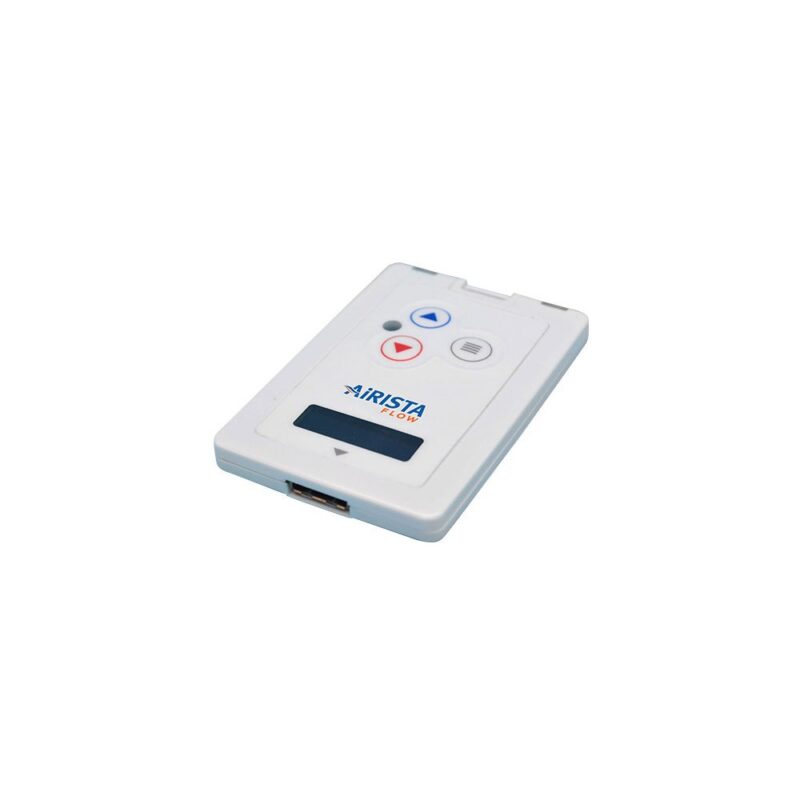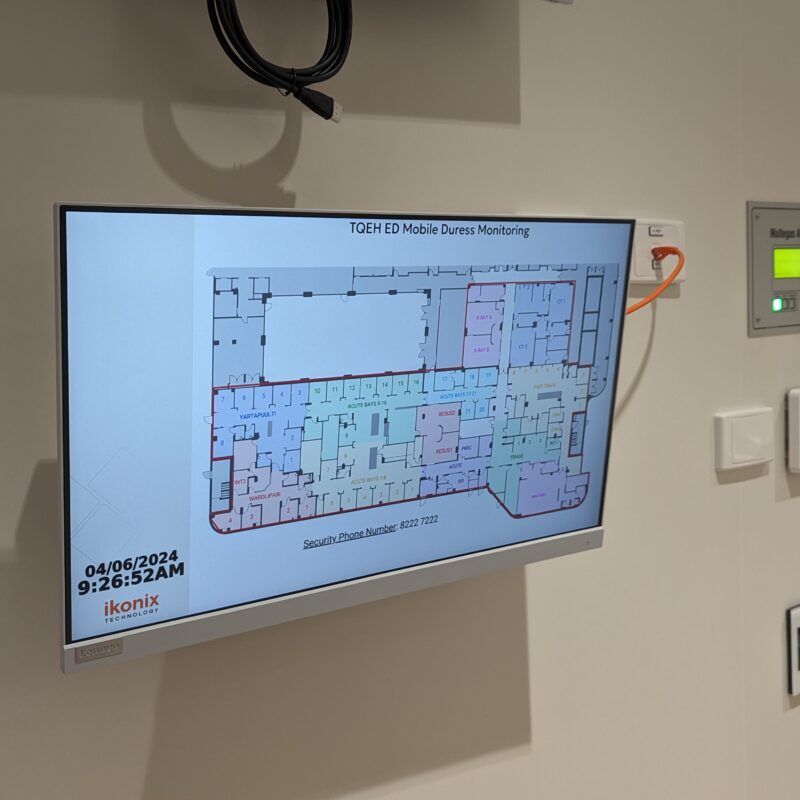In a concerning trend, healthcare workers are among the most likely to face workplace violence.
Frontline workers of all industries need a way to request help. Our solutions offer that security with both fixed and wireless duress alarms, connected to critical messaging.
Wearable tags, for location-enabled duress alarms.
Using a system such as AiRISTA's personnel tags, workers in an unsafe situation can quickly and discreetly activate an alarm for a security or support response. This system uses with Wi-Fi or Bluetooth Low Energy (BLE) to track the tag’s location within your facility, and with the push of a button or pull of a cord, send a duress alarm to a central monitor. That could be a shared workspace or a security office, for example.
These devices can also monitor for a lack of movement or a fall. If a person is immobilised due to a safety event or injury, their lack of motion sends a similar alert to direct support personnel for a welfare check.

Upgrade alerts to a visual display.
When an alarm is triggered and a safety intervention is needed, you team need the most accurate information.
With Ikonix Billboard, a shared monitor can publish a map of your facility with the specific location of the event, ensuring your security personnel know where they’re needed. Using internal zones for rooms, Billboard highlights the room to which the team needs to rush, eliminating any confusion and improving response times.
RTLS systems can be accurate to inside one metre, so less time is spent searching, and more time protecting your personnel from unsafe situations.

Man-down, no-movement alarms.
Automated requests can be raised when a worker has not moved in a set amount of time, alerting teams to check in on their wellbeing
Discreetly summon assistance.
Wireless tags with push-button and/or pull-cord duress alerts can raise alarm quickly, easily and without exertion or extra attention.
Display alerts for responders.
Integrated with Ikonix Billboard, duress alerts can be broadcast to a responding team with visible and audible alert tones, ensuring quick action.
The simplicity of wired systems.
In many instances, unsafe situations can be contained to specific, predicted locations. This could be at reception or triage stations, or in dedicated spaces on a ward where volatile situations are more expected.
In such areas, installing fixed duress alerts provides access for any person there to summon assistance. The message raised can be ingested into Ikonix Messenger and then sent out via your customised workflows to the personnel that need to know. This could be a page to your security team, or a group message on Ikonix Connect to everyone on the ward.

Frequently Asked Questions

This is any technology that allows your workers, guests, patients, or anyone else to signal they need help. They could need help for any number of issues, such as a safety incident occurring, workplace violence, or any other dangerous situation.
We put systems into two categories – fixed or mobile duress systems.
This is any wired, mounted, or other hardware duress alarm. The user end could include buttons, pull-cords or more to allow the person in distress to generate a security alert.
These are more technologically advanced systems that are usually personally worn or carried, such as a tag, wristband, or pendant alarm. They can send a wireless signal back to support teams, often including their location.
Using real-time location services or RTLS, we can monitor personnel locations as well as the duress button, and share rich data about where and when the person needs help.
In a fixed system, the location of the alarm is necessarily static and well known. When moving a mobile solution, the location accuracy of alerts will depend on the technology used as well as the immediate environment. Using a network such as Wi-Fi, BLE, or UWB, ranges differ from 1-2 metres, down to within centimetres.
Accuracies will always depend on signal strength in the area, but a well-implemented RTLS-powered duress and safety system will be able to identify and dispatch personnel to assist in the right place.
This will again depend on the system. A very basic system connects a button to a bell or light. This might work in some instances, especially when responding personnel are always able to monitor, waiting for an activated alarm.
A more sophisticated system will use the fixed or even mobile duress activation to generate a message, then broadcast out through your communication system, using something like Ikonix Encode for radio paging, or Ikonix Connect for an app notification. With the latter, a critical alert can override a phone’s silent setting, ensuring someone can be in action quickly.
